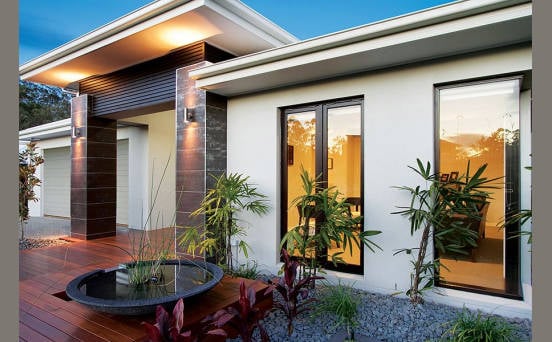Table of Content
Hebel is a highly versatile building product, available in blocks or panels, and suitable for use in a range of applications. These include external walls, internal walls, flooring, decking, load bearing and non-load bearing walls and DIY projects such as BBQs, letter boxes and fences. This semester, we will investigate how the application of circular building production and the use of materials from urban mining can succeed architecturally, using different design locations in Heidelberg. The city of Heidelberg has set itself ambitious sustainability goals and wants to lead the way as a pioneer of the circular economy in urban development and urban planning.

Hudson Ridge Builders have been operating within the Ballarat and Geelong regions for over 20 years, building designer homes synonymous with superior quality and a unique level of personalisation. Three years since completion, after a problem-free build, the house is still a delight. It’s a very efficient design, easy to maintain and with remarkable storage space, and the insulation does everything it claims to do. With detailed drawings, professional guidance and a good builder, you can sit back and enjoy watching your house being built. After the arrival of the SIP/CLT kit and its erection by certified installers, electrical and plumbing will begin inside as the outer skin is completed externally. And when the finishes are in place and the kitchen fitted, paintwork will bring the house to life.
Lecture Series SUSTAINABLE CONSTRUCTION 22/23
People will live and work in these changing units, so that they serve as busy experimental laboratories and at the same time shape and constantly change the appearance of the building. The event showed many developments that can and must revolutionise the way we build in the future. Nevertheless, the familiar and the tried and tested can help to overcome upcoming challenges in the construction industry. Hebel® offers the most efficient solution in construction systems, with more than 80 years of proven successes in the international construction industry. Compared to polystyrene and many fibre cement substrates, the use of Hebel for external walls reduces noise from external sources like traffic, meaning more peace and quiet.

Each volume of “Building Better – Less – Different” details two fundamental areas of sustainability and explores their specific dynamics and interactions. After introductory overviews, innovative methods and current developments are described and analysed in in-depth essays, international case studies and pointed commentaries. The sustainability criteria of efficiency (“better’”), sufficiency (“less”‘) and consistency (‘different”) form the framework for each book. The exhibition examines the history and the future of this controversial material. From its early origins when it was intended as a sustainable alternative to natural resources, to its meteoric rise in the twentieth century.
Prof. Dirk E. Hebel speaks at the Parliamentary Evening at the Deutsche Bundestag Berlin
Once the penetration has been filled with the required cables or the like, the gap around the penetration should be filled with a reputable flexible sealant such as Sikaflex polyurethane sealant. Below is a table which outlines what you need for common fixings to Hebel. Installing one Hebel panel is the equivalent to laying 75 bricks, which means a 150m2 home can be go up as quickly as 3 days when installed by experienced Hebel installers. Building with Hebel means faster construction without sacrificing on quality.

Hebel panels are a steel reinforced, 75 mm thick panel manufactured from Autoclaved Aerated Concrete. Put simply, Hebel is a form of concrete that has been aerated and then steam cured under high pressure. The cell structure created in this process gives the panel many product advantages that are outlined below. Steel won’t warp, sag or shrink, which reduces the risk of cracked walls, jambed doors, sticking windows, cracked cornice and wavy rooflines.
The better way to build
Regina Gebauer, meanwhile teaching and research assistant at the Professorship of Sustainable Construction, won the 1st project prize for students with her design project “Until everything moves”. In this project, she proposes the addition of two residential storeys to the existing Café ADA in the Mirker Quarter in Wuppertal, which was part of the Solar Decathlon teaching achievements over the past two years at the KIT Faculty of Architecture. The award ceremony took place on 17 June at the Solar Decathlon Europe in Wuppertal. NEWood exhibition table © Professorship of Sustainable ConstructionThe “NEWood” project is a novel class of bio-based, resource-efficient and CO2-negative materials based on mycelium.

CSR Hebel is Australia’s leading manufacturer of autoclaved aerated concrete . Backed by CSR, the trusted name in building products, Hebel is a strong yet lightweight building product that is available in panels or blocks. It is kind to the environment, quick to build with and better to live in.
‘Back to Front House’ is another showstopping Reece Keil Design which solidifies his company’s reputation for being a progressive and adaptive design firm. Building with Hebel offers you a clean, modern palette to achieve the exterior look you want in a range of textures, finishes and colours. Find out more about which render and coatings systems work best with your Hebel home. Hebel PowerFence provides an innovative, solid fencing system that’s attractive, versatile and easy to install – adding the perfect touch to your home.

In cooperation with an industrial partner, the Karlsruhe Institute of Technology team is also exploring the use of digital and advanced manufacturing technologies in the development of mycelium-based composites. Designed as a prefabricated module system with a 100% circular construction method, the unit proofs already today, that with current technology and design capacities, we are able to fulfill the requirements of the European Green Deal. No glues, no paints, no foams or wet sealants were used, so that the circularity of the building and its materials is guaranteed. In addition, only mono-materials were used for construction, meaning no composites or mixtures of materials are to be seen. The deconstruction friendliness of a construction and the reusability of materials are decisive parameters for circular planning and building. For high-quality recycling and reuse of materials, material layers as well as components must be planned and installed in a detachable way.
The Solar Decathlon event will take place in Wuppertal from 10 to 26 June 2022. Visitors will experience future-oriented architecture and creative climate protection at first hand. Welt am Sonntag reports about scientists like Prof. Dirk E. Hebel working in laboratories on the possibility of replacing metals or mineral materials with harvested materials like mycelium, the root network of mushrooms. Two members of the RoofKIT team, Katharina Knoop and Johannes Hasselmann, had the opportunity to present the RoofKIT project and the Solar Decathlon at the Ingenieurgruppe Bauen in Karlsruhe last Thursday.
This important step is necessary to fully integrate solar panels into the design approach of future buildings. The overall light concept follows the idea of avoiding unnecessary fixtures where possible and using flexible hand-carried cable-free elements to illuminate only those areas where wanted. In addition, an artificial lighting system around the core delivers light with a luminous color adapted to the time of the day. The first volume “CIRCULAR BUILDING AND CIRCULAR ECONOMY” presents concepts, methods and examples of circularity in construction and the economy. The circular economy is not solely about recycling but encompasses a wide range of strategies from local community projects to new ownership and service models and steering mechanisms such as carbon fees and dividends. Used for external walls is a great addition to Hebel’s suite of external wall systems.

No comments:
Post a Comment